Affiliate disclosure: This post may contain affiliate links. Please see our Privacy Policy.
Years of mushroom foraging under my belt, and I’ve still never seen a giant puffball mushroom. I keep hearing they’re everywhere, and I know that they’re one of the “foolproof four” easiest to identify mushrooms along with chicken of the woods, shaggy mane, and morels. Easy to identify and even easier to spot can only get you so far, if there just aren’t any nearby.
While giant puffball mushrooms may be the most famous, there are dozens of edible species of puffball mushrooms, and they’re all just as easy to identify.
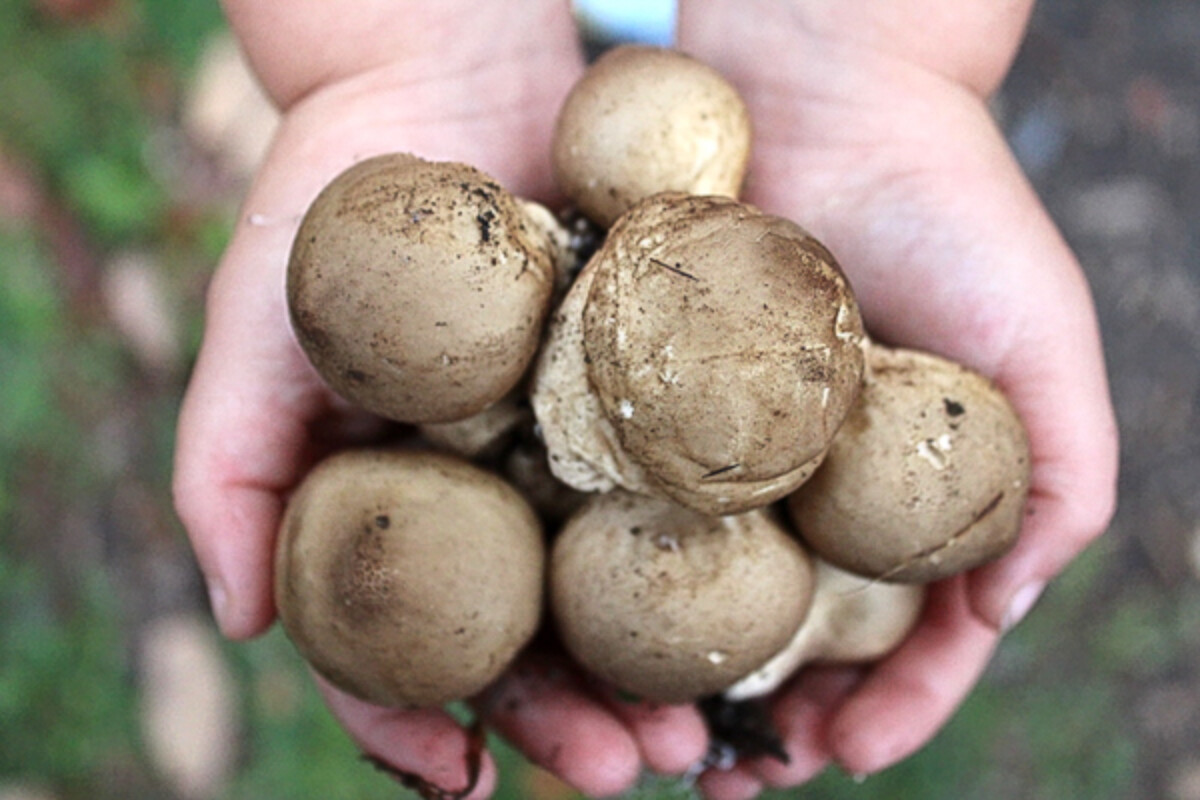
This particular patch of puffball mushrooms was discovered by my 3-year-old daughter.
She’s been foraging with me for over a year, and she’s always excited to learn a new mushroom. She rushed over with her find, and this proud mama congratulated her on her very first puffball mushrooms.

Natural History Of Puff Ball Mushrooms
The term “Puff Ball” can be used to describe various spherical mushrooms that have no gills, pores, or distinct reproductive structures. They are generally completely white through the center when immature, but as they age most of their internal tissues transform into a powdery “spore mass”. Many species release their spores in a “puff” when pressure is applied, albeit by rain, trampling, or simply being squeezed.
There are at least 4 to 6 genera of so-called puffball mushrooms, depending on how liberal you are with the term (it’s not a strict scientific classification). The most commonly consumed, and most important to know, are Lycoperdon and Calvatia. Each of these has many edible species. I’ll walk you through all the fun variations on puffball species at the end, but for now, here are the basic identification features for most puffballs
Ecology of Puffballs
Puff Balls can be found in almost any habit at any time of year. They are common to find on trails, roadsides, pastures, forests, wood chips, deserts, riparian areas, high mountains, and a handful of disturbed environments. They are for the most part saprobic, meaning they obtain all their carbon and nutrients by consuming latent organic matter. Most species grow directly from the ground, although at least one species grows directly from woody debris. Certain species, particularly the meadow-dwellers, grow in circular patches known as “Fairy Rings”.
Puffballs produce A LOT of spores. Giant Puffballs, which are some of the most impressive mushrooms out there, can produce up to 7 trillion spores! For reference to this astronomical and nearly incomprehensible number, a trillion seconds is well over 30,000 years!
Identifying Puffball Mushrooms
There are many species of mushroom that look like puffballs when they’re small, including several toxic species. When cut in half though, it’s easy to identify puffballs.
Identifying An Edible Puffball
- Shape: Round or spherical. In some cases, they may have a stem-like base or be pear-shaped. Edible puffballs do not form a star-like structure as is the case with Earthstars.
- Size: Anywhere from just a couple centimeters up to a meter in size. If your mushroom is about the size of a soccer ball, there’s no doubt you have an edible giant puffball.
- Texture: Edible Puffballs are fleshy and soft. The outer surface can be thick, but it is never hard as you see in Earthballs.
- Powdery Spore Mass: Even though you can’t eat puffballs once they form a spore mass, it can still help to identify the species. Edible puffballs tend to have a powdery spore mass once the mushroom is mature.
- Internal Texture/Color: Puffballs should only be consumed when the inside has a clean and homogenous white color. There should be no tissue differentiation or coloration of any sort. Even the slightest yellowing or darkening of the internal tissues could mean bad news. Eating overly mature puffballs is the main reason people get intoxicated when picking this mushroom!
Sometimes puffballs look like young, immature mushrooms that will mature into something completely different later. Young anamita mushrooms can have a small “puffball shape when immature. But it’s easy enough to tell the difference when you cut them in half.
Mushrooms with gills may look round while they’re immature, but their telltale gills will still be developing inside.
If a mushroom is a pure white on the inside, with no sign of gills at all, then it’s a puffball.
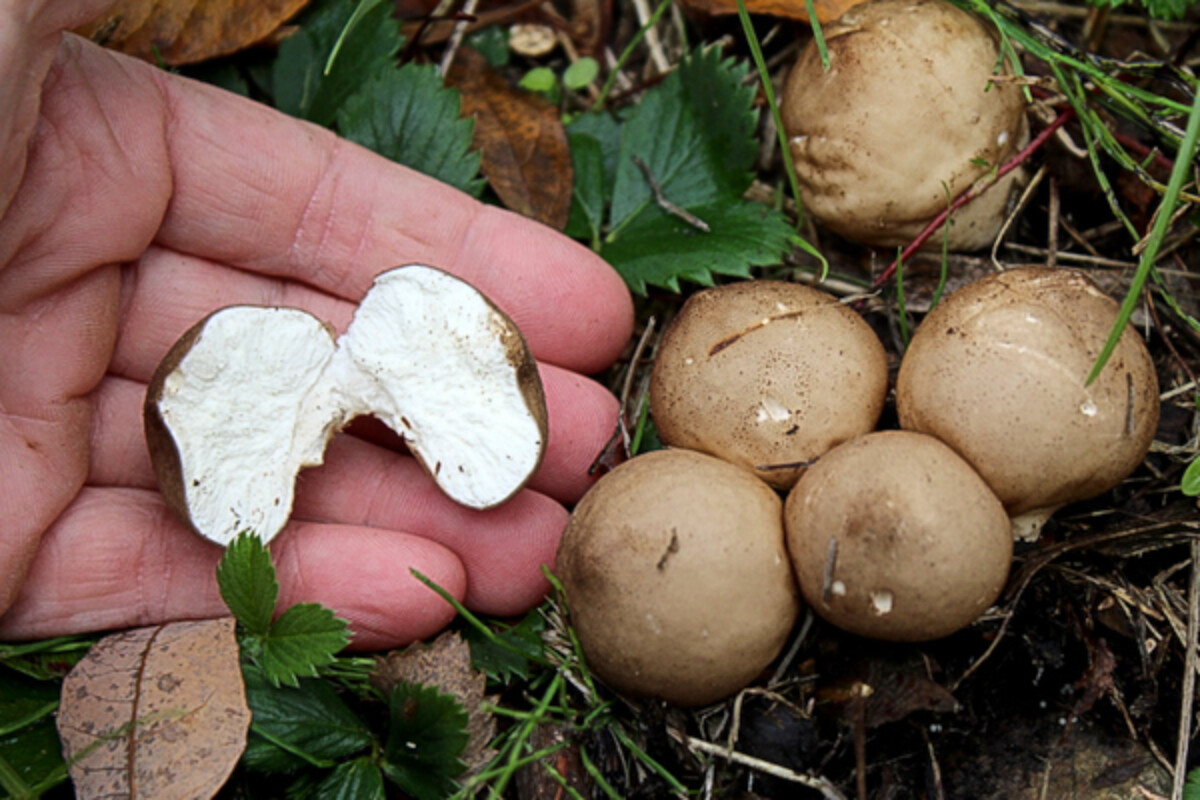
Still, there are a few puffballs that are toxic, so a lack of gills isn’t a sure sign that you have an edible puffball mushroom.
A lack of gills and a pure white interior are both required to identify edible species.
Toxic puffball look-alikes either have gills, or they’re not white on the inside.
It’s not at all ambiguous. No gills and white means puffball, and gills and any other color is no good.
Poisonous puffball species don’t mess around, and a black puffball is a toxic puffball.
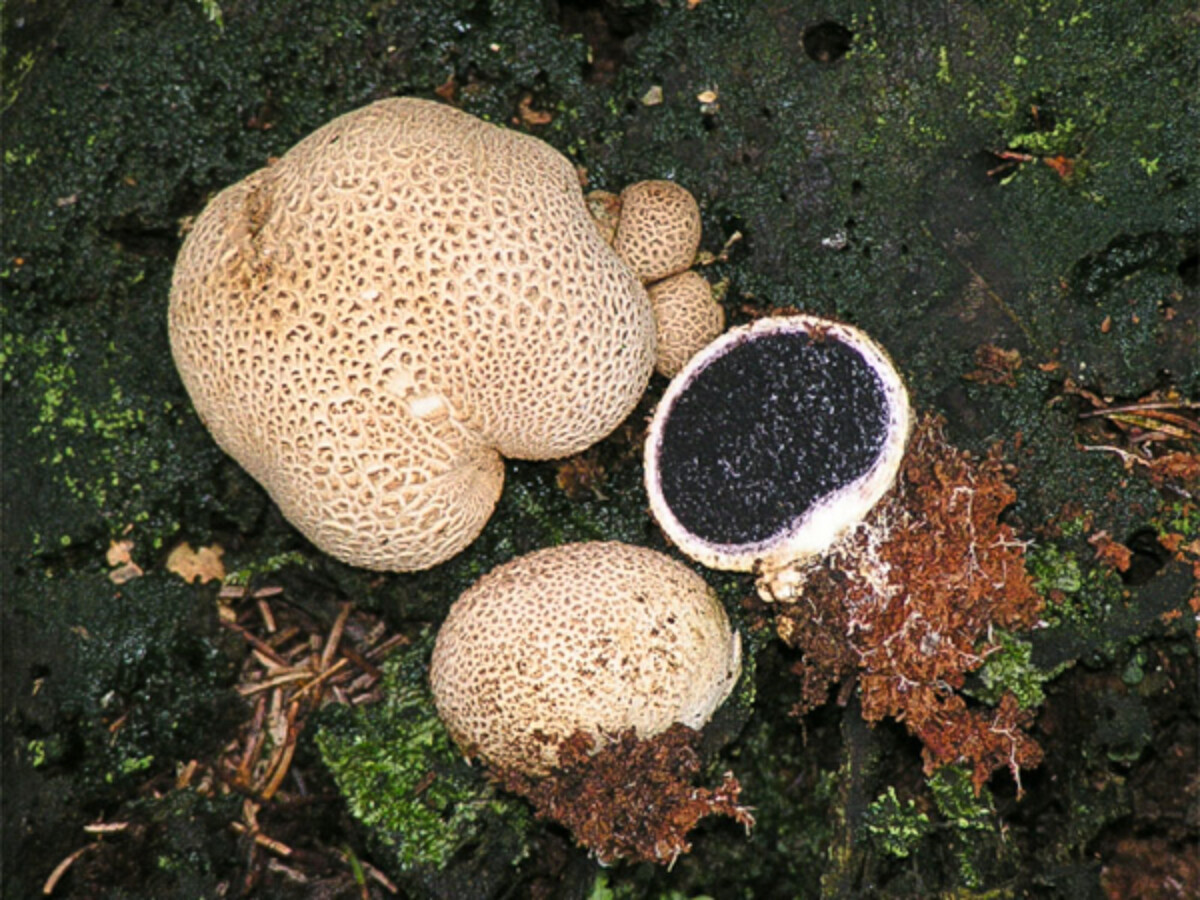
Since puffballs don’t have gills, they have to get their spores out into the world somehow. They do it by converting their entire mushroom bodies into pores, which has me uniquely impressed.
Once a puffball has passed the edible stage, the interior will begin to turn yellow or green, and that’s the mushroom entering its reproductive phase.
Puffballs with a green or yellow interior are no longer edible, but it’s not necessarily an indication that you’ve found a toxic species. It may be a perfectly edible puffball species but you’re just a week too late.
The same patch of puffball mushrooms, a week later, will be a completely different find. Mine, in particular, turned a very unambiguous green on the inside and puffed out a cloud of spores as I opened them.
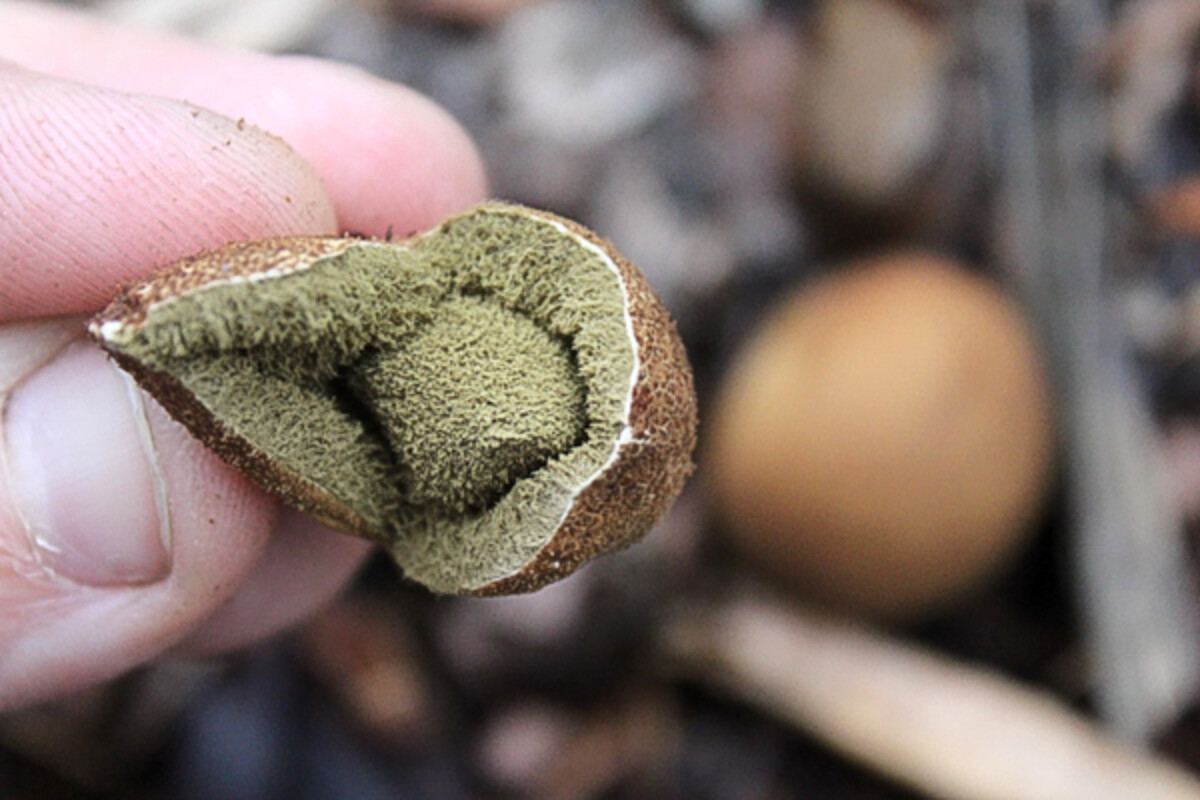
Once puffballs have begun to change color on the inside, do them a favor and step on them.
Jumping on a patch of puffball mushrooms pops them open and helps send their spores far and wide. You may have missed out on this patch this time, but dispersing their spores will help you have better luck next time.
Besides, it’s fun.
Overripe puffballs are basically just tough skins full of millions of tiny spores that pop on contact. If you ever stomped packing bubbles as a kid, you’ll love stomping puffballs.
My daughter took my invitation to puffball stomping seriously and gladly went to work.
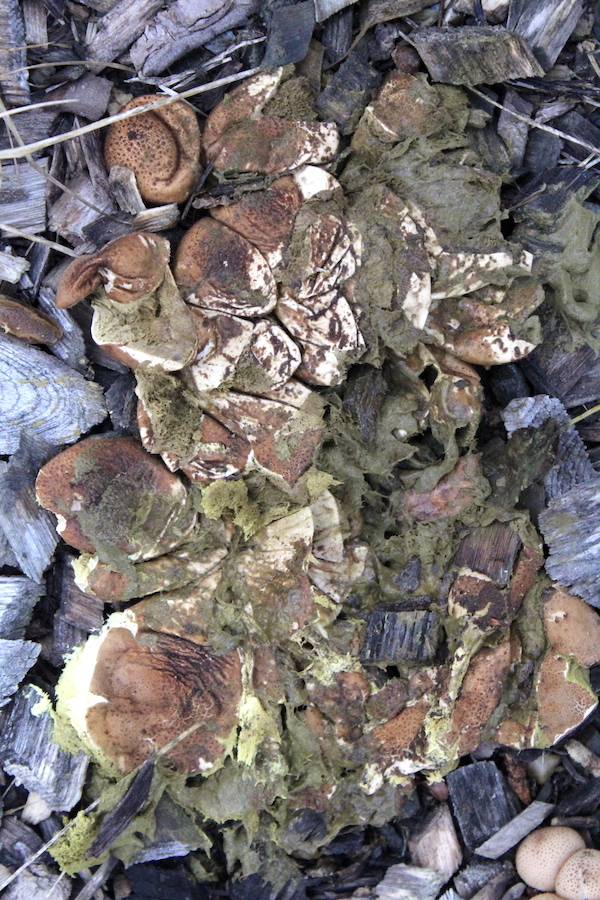
Somehow, even after a decade of foraging mushrooms, I’ve yet to find a giant puffball. I know, it’s odd.
They’re everywhere I’m told…and yet sometimes not to be seen. I have at least 50 wild mushroom species under my belt, crossed off my bucket list…but never giant puffballs.
Thankfully, one of my readers was kind enough to send a picture of his find.
The giant puffball below is from Dan Johnson, who lives near Shevlin, Minnesota.
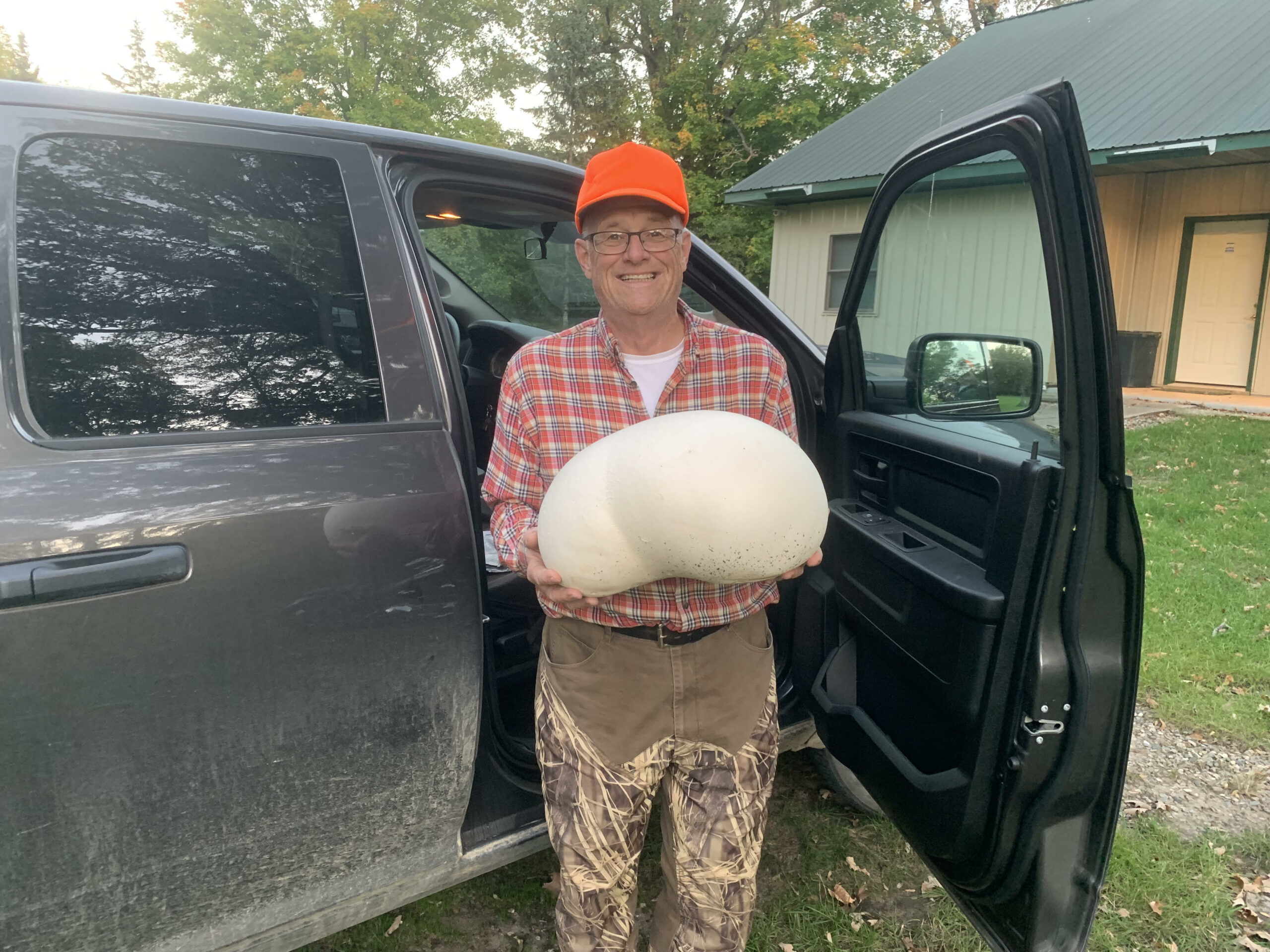
Puffball Mushroom Look-Alikes
Puffball mushrooms are part of the “foolproof four” which is a group of mushrooms that are perfect for beginners. (The other three are chicken of the woods, shaggy mane, and morels.)
The main thing to watch out for with puffballs is the type of puffballs that are black in the inside, as mentioned before. Those are toxic.
When they’re green inside, they’re past prime and no good for eating.
But a big puffball shape with a white interior is generally pretty foolproof, a few exceptions. Personally, I don’t think these look like puffballs, but every year I see people on mushroom ID groups make these mistakes.
Shrimp of the Woods (Entoloma abortivum)
A potential edible look-alike is shrimp of the woods, though they’re only vaguely similar. They are edible, and actually delicious…better tasting than puffballs, so they’re a great find, too.
Shrimp of the woods mushrooms are a strange aborted mushroom growth that fruits out when honey mushrooms come into contact with another mushroom known as Entoloma abortivum.
They’re brownish/white blobs with a pink/white interior, and like puffballs, they have no visible gills inside.
Shrimp of the woods are edible, and here’s a recipe if you find them. Generally, shrimp of the woods are not round, and have a textured outside and springy, shrimp-like texture (rather than the foamy texture of puffballs).
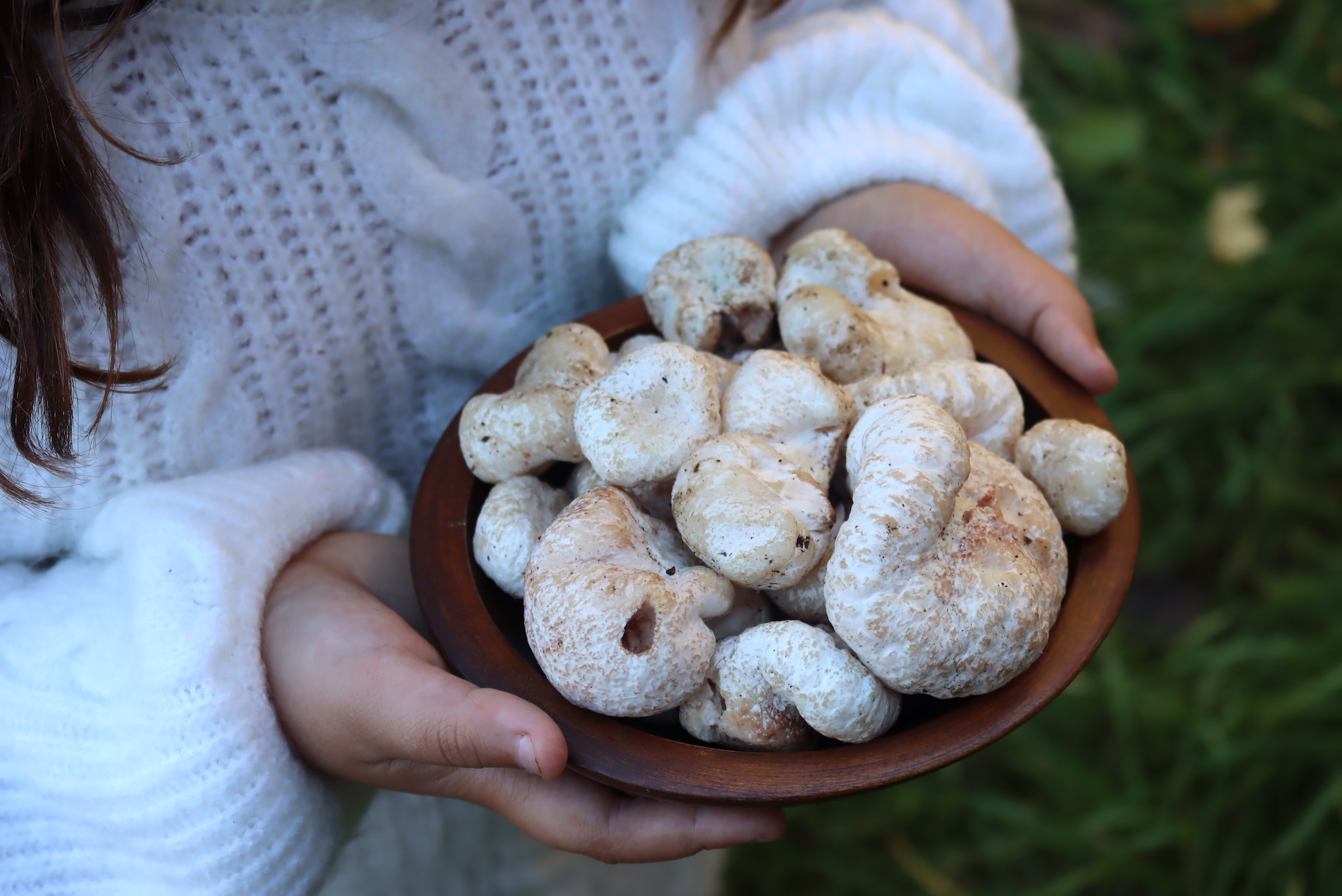
Earthballs (Scleroderma)
Despite having a pretty distinct appearance, it’s not unheard of that someone mistakenly eats a Scleroderma thinking it’s an edible puffball. While they are not deadly, most species are toxic and can make you very sick.
Scleroderma can be easily distinguished by their rather hard texture and tough outer surface, compared to the fleshy and edible puffballs. They are often known as thick-skinned or hard-skinned puffballs. Scleroderma also forms a spore mass that stays solid and does not become powdery, when mature. Scleroderma are also commonly found buried or half-buried beneath the soil, similar to truffles. Many times they form thick, root-like strands of mycellium from their base.
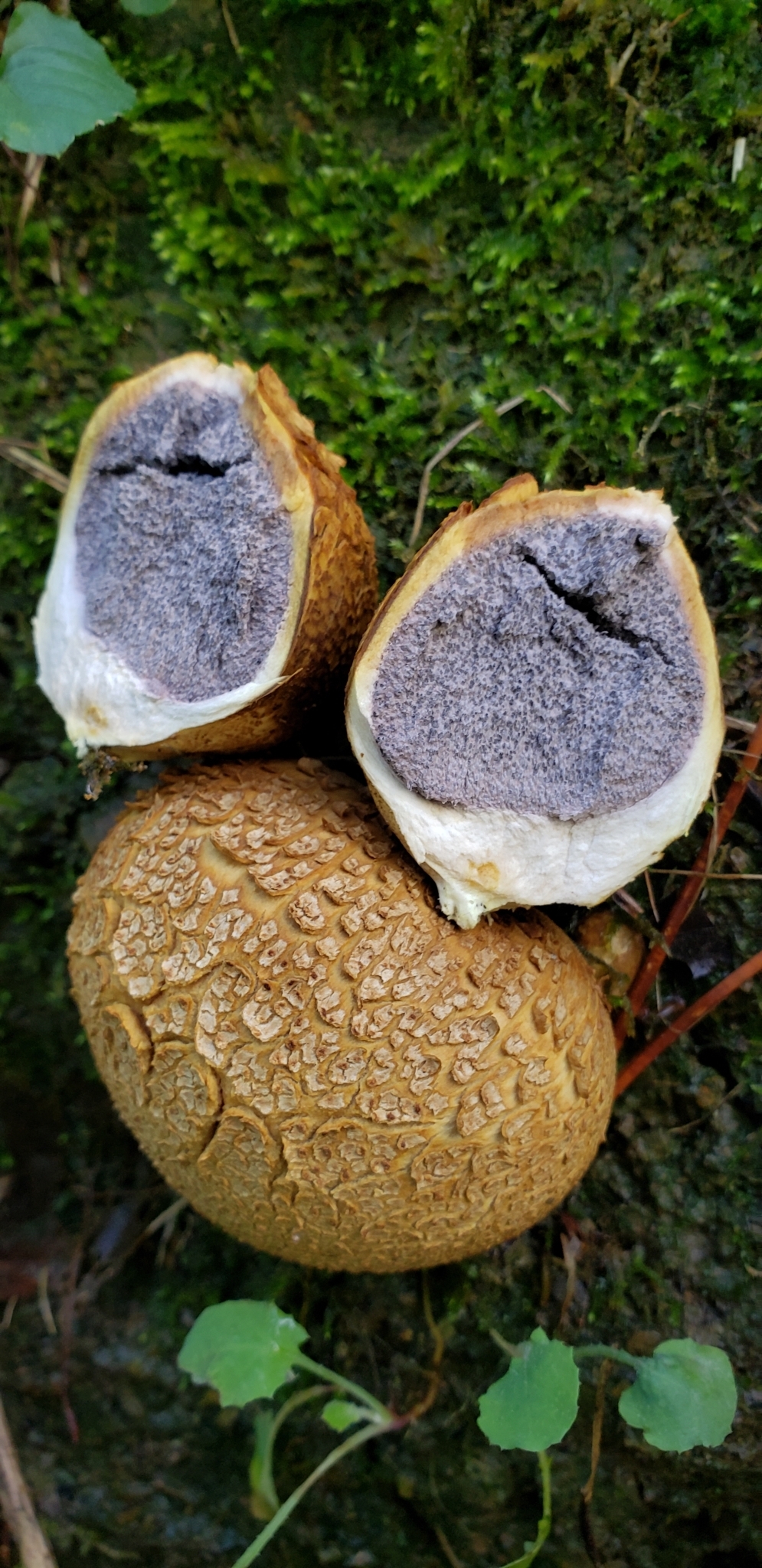
Earth Stars (Geastrum and Astraeus)
Earth Stars are easy to distinguish thanks to their thick outer skin that unfurls into a star-like shape. Many people consider them puffballs, although they are not really worth anything from a culinary perspective.
Earthstars are generally tough, woody, or leathery and would probably be unpleasant to eat.
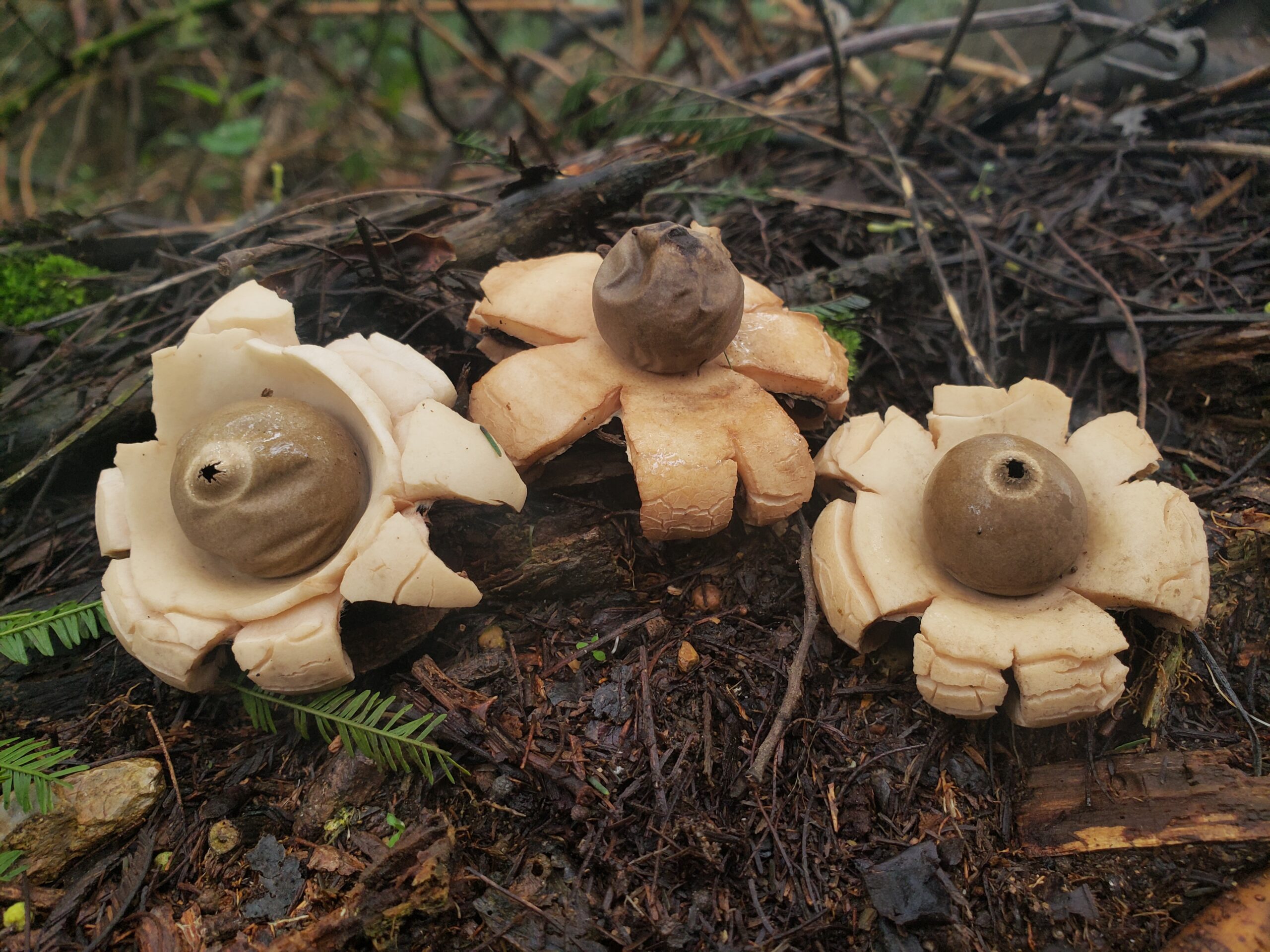
Stink Horns (Clathrus)
Stink Horns and their close relatives hatch from a white spherical “egg” that looks a lot like a puffball.
If you cut down the middle of a stinkhorn egg you’ll see differentiated tissues, and sometimes a thick gooey substance.
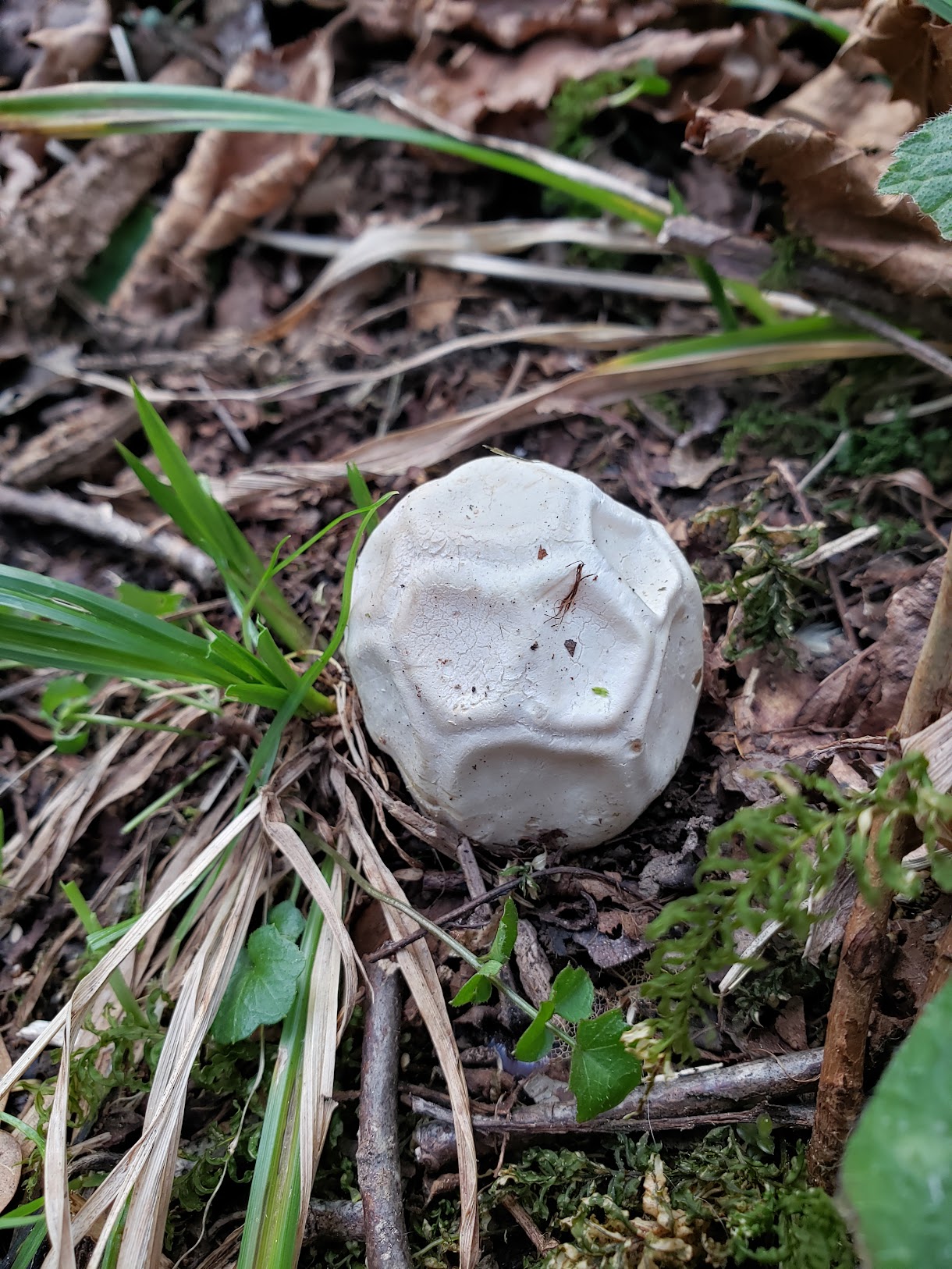
Deadly Amanitas (Amanita sp.)
While these mushrooms form a classic stem-and-cap structure when mature, immature mushrooms are often completely oval to spherical. They are also completely white due to the thick cottony universal veil that completely covers immature specimens. This can make them look a whole lot like a puffball to the untrained eye.
Amanitas are responsible for about ninety percent of all mushroom-related fatalities, so they are important mushrooms to know. Some of the toxic species include A. virosa, A. ocreata, A. bisporigera, and A. phalloides.
The best way to make sure you’re puffball isn’t a Death Angel or any other Amanita, is to cut it down the middle. Amanitas will not be completely white through the middle, but you’ll see gills, a stem, and a cap beginning to form. The outer veil on Amanitas is also very cottony and can be easily removed compared to puffballs.
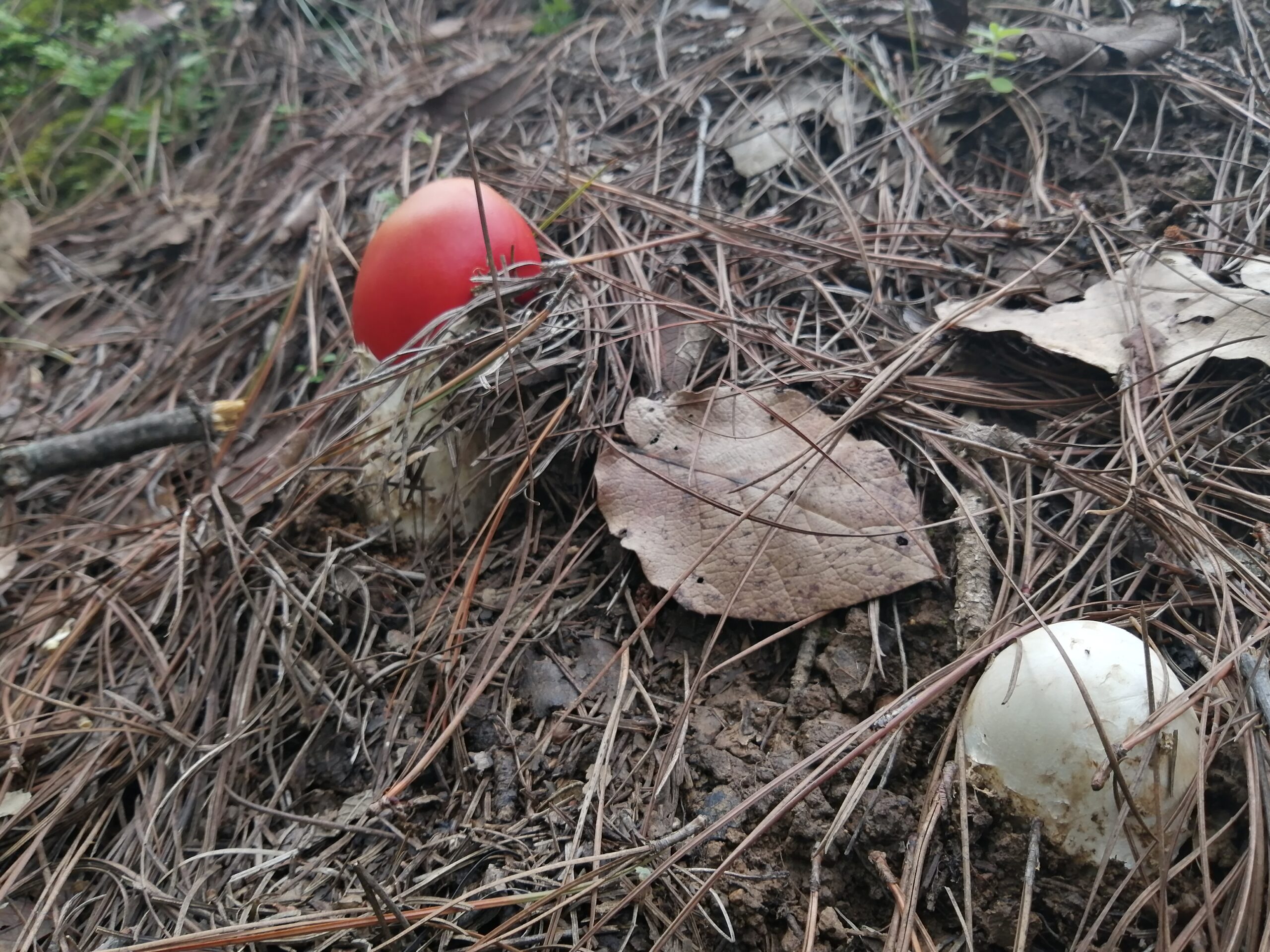
How to Prepare Puffball Mushrooms
Assuming you’ve found a patch of puffball mushrooms and positively identified them. What’s next?
Many people choose to peel them because the exterior skin can be a bit tough.
That makes sense because once the interior flesh turns to spores the exterior skin is basically a balloon waiting to be popped by some passing animal.
Peeling puffballs can be a bit tricky though, and not to mention time-consuming.
The skin is definitely distinct from the body of the mushroom, but it takes a bit of skill to remove it efficiently. Honestly, it’s a complete pain and not strictly necessary.

Peeled or not, it’s important to get puffballs into the refrigerator soon after harvest.
They’ll begin to spoil quickly if left un-refrigerated. I particularly like the idea of making a dried puffball powder to preserve them for long-term use.
In the meantime, these tiny puffballs are getting diced up and browned in olive oil to top a simple plate of pasta.
Cooking Puffball Mushrooms
Though puffballs are generally considered edible, a small percentage of unlucky folks are intolerant to some otherwise edible puffballs, so always consume them in small amounts if it’s your first time trying a species.
Puffballs are rather bland mushrooms but with enough creativity, they are a perfect vehicle for other flavors. Think of it a bit like tofu, except more spongy and less watery.
Indeed, they’re not ranked up there with porcini or chanterelles, but they’re worth harvesting if it’s all your finding. Also, if you just want to step out of your comfort zone and try something new! Chefs with a creative drive and enthusiasm to try new and unusual ingredients can find a lot of potential with these mushrooms.
Puffballs are remarkably versatile, and they can be substituted for tofu in recipes like this puffball stir fry. Another classic recipe is the Giant Puffball Pizza. It might not be what you think, it’s not puffball toppings, but a puffball crust! Simply cut a large slice of the puffball, and layer it with tomato sauce, cheese, and your favorite toppings. Throw it in the oven until thoroughly cooked and voila!
Since I’m generally working with small puffballs rather that giant ones, I usually just cube them up and add them to whatever it is I’m cooking. Pasta sauce, stir-fries, soups, you name it. You can’t go wrong since the flavor is very mild and the texture goes well with many recipes. I recommend always cooking puffballs thoroughly to avoid digestive issues.
One of my favorite ways to cook puffballs, which even the kids will eat, is simply making “Breaded Puffball Fries”. Think of it like fish sticks, but using a puffball instead of fish. This works with any puffball, although it’s best with giant puffballs. Simply cut your puffballs, bread them up, and cook them in the oven or on a skillet.
Types of Puffballs
For mushroom nerds, here is a guide to a bunch of different types of puffballs.
Below, I have included various types of edible puffballs. Toxic species will be listed above in the lookalike section. If you’re not too concerned about all the taxonomic details, you can go down to the checklist titled “Identifying An Edible Puffball” above, and that’ll cover what you need to know to make sure you have an edible puffball. If you are looking for species level stuff, read on!
Lycoperdon
These are some of the most common puffballs. They often have a “pear shape” due to their elongated stem-like base. All lycoperdons release their spores through a small opening, known as an apical pore, at the top of the mushroom. Some are smooth, others have small spikes or pins on their surface. The outer surface of Lycoperdons, known as the peridium, is thin a papery. Lycoperdons also often grow in clustered patches, often with dozens of individual mushrooms. All lycoperdons are considered edible and there are over 40 species known worldwide!
Common Puffball (Lycoperdon perlatum)
As the name suggests these are pretty common. They are about 2-8 cm in size, and grow in patches, often in clusters. They are typically found in forests and woodlands. Common Puffballs have a fuzzy surface covered in very small fragile “spines” or hairs. They are generally white to light brown and darken with age. It is similar to other puffballs such as Lycoperdom umbrinum, Lycoperdon pulcherrimum, and Lycoperdon molle.
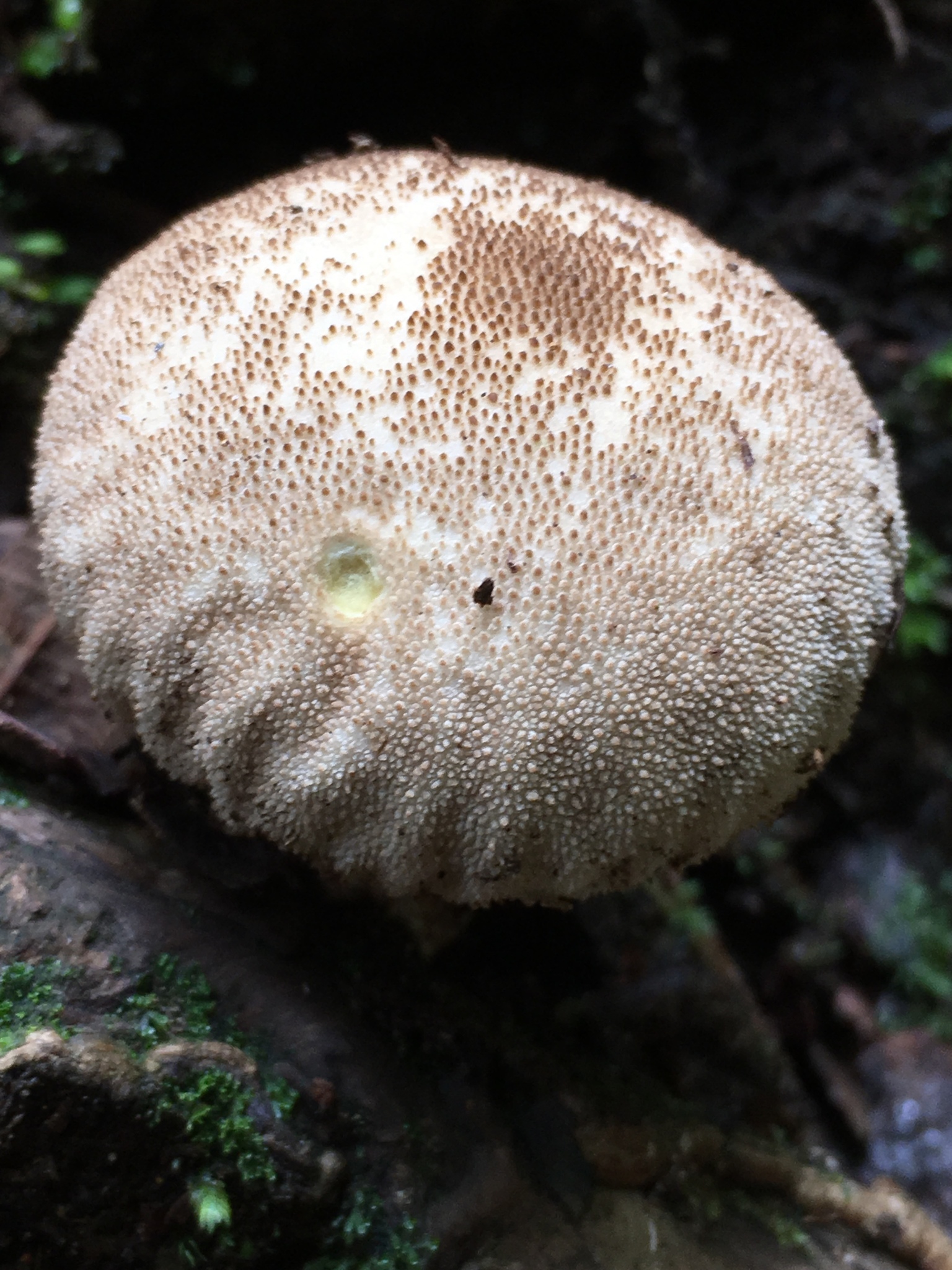
Peeling Puffball (Lycoperdon marginatum)
These are very similar to the common puffballs. The main difference is that when young they have larger spines (think punk-like liberty spikes) and as they mature the outer surface cracks and peels into numerous plate-like pieces.
Pear-Shaped Puffball (Apioperdon pyriform)
This was reclassified into a different genus, but for all utilitarian purposes, it is a lycoperdon.
It is small, grows in clusters, and is the only puffball found growing directly from woody debris.
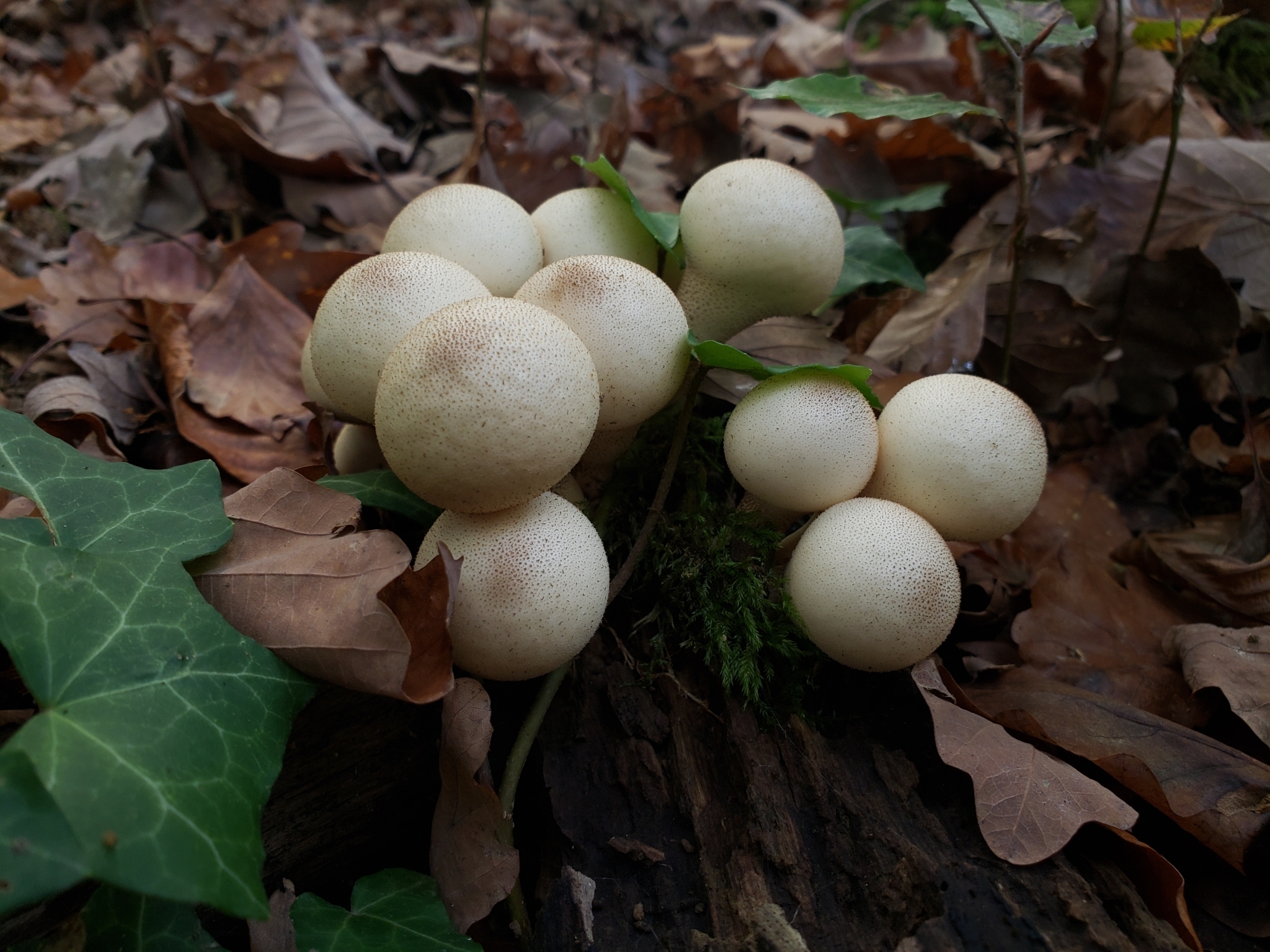
Meadow Puffball (Lycoperdon pratense)
These are pretty similar to the common puffball, but are distinguished by the fact they grow in meadows.
Unlike Calvatia species (discussed later), which also grow in meadows, this species retains its stem-like elongated base.
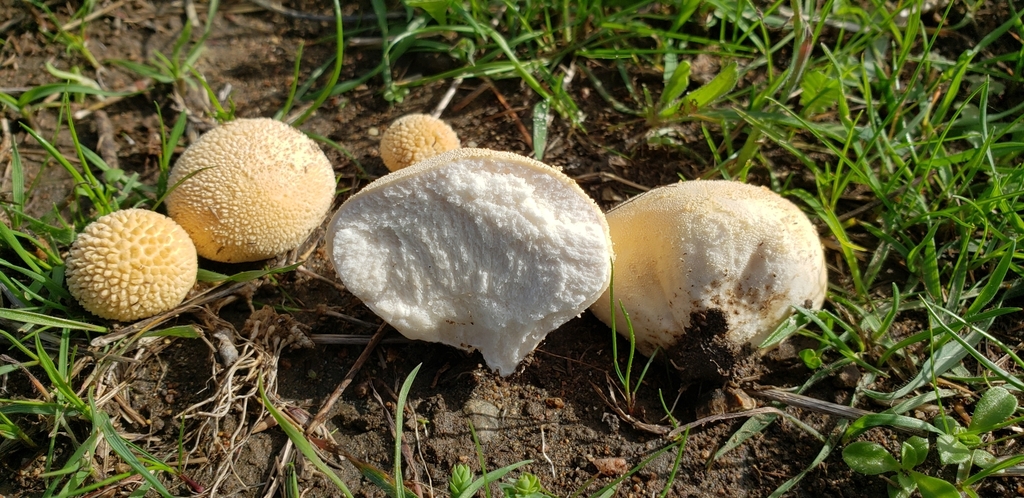
Pestle Puffball (Lycoperdon excipuliforme)
As the name suggests, this species has a relatively large base that gives it a pestle-like shape.
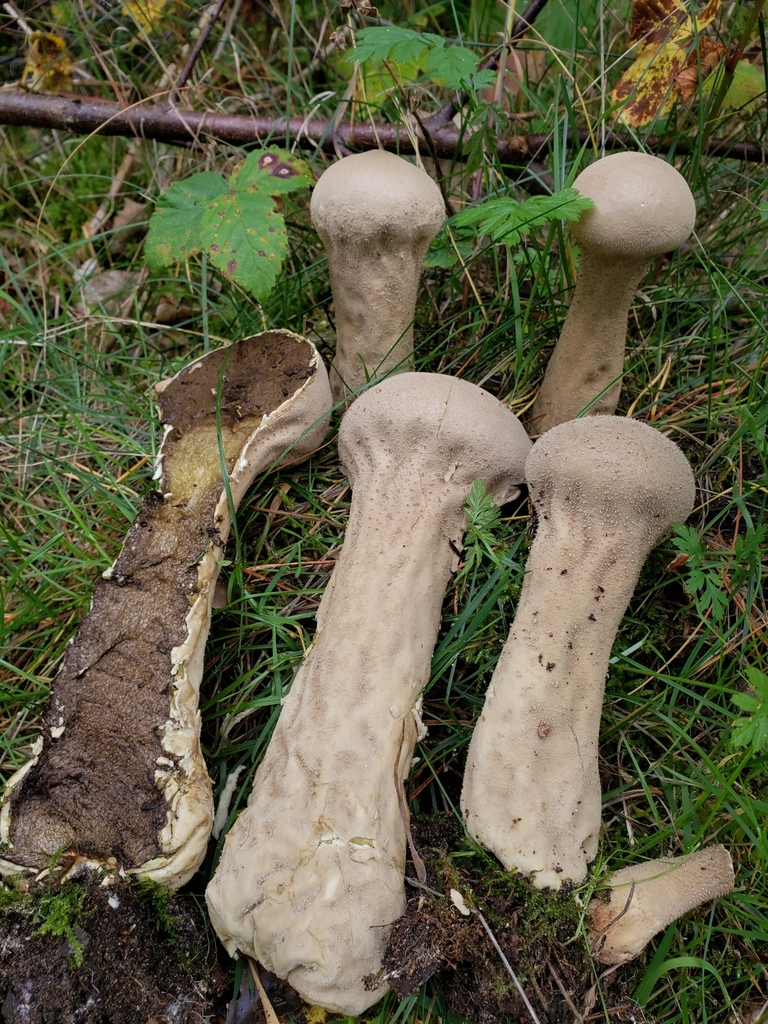
Mosaic Puffball (Lycoperdon utriforme)
These form a neat-looking cracked “mosaic” on their surface. It is often found in meadows.
Other species of Lycoperdon
With over 40 species, this list could go on and on. Here is a list of some of the more common Lycoperdon species not mentioned above: Spiny Puffball (Lycoperdon echinatum), Curtis’s Puffball (Lycoperdon curtisii), Dusky Puffball (Lycoperdon nigrescens), Lycoperdon subincarnatum (Lycoperdon subincarnatum), Lycoperdon fuliginous (Lycoperdon fuligineum), Lycoperdon compactum (Lycoperdon compactum), Smooth Puffball (Lycoperdon molle), Long-spined Puffball (Lycoperdon pulcherrimum), Grassland Puffball (Lycoperdon lividum).
Calvatia
These puffballs are rather large, ranging from about baseball to basketball size (as David Arora puts it), and do not release their spores through an apical pore. Instead, their thick outer wall cracks with time, breaking, and exposing the spore mass to the environment. Once exposed, it can be easily spread by wind, rain, and other factors. Calvatias are more spherical (less pear-shaped) than Lycoperdons and they tend to be larger and more solitary as well.
Giant Puffball (Calvatia gigantea)
As the name implies, this is a large mushroom that can grow up to a meter in size (3 feet) and weigh up to 20 kilograms (+40 pounds). They are typically found in meadows, grasslands, or pastures. Giant Puffballs have a rather smooth white skin that fades to yellow with age. These are relatively cosmopolitan and distinct from the Western Giant Pufball which grows in arid areas of the west.
Western Giant Puffball (Calvatia booniana)
This species grows just as large as the other Giant Puffball, but only occurs in arid regions of the western United States. This species is distinct because instead of its surface being white and smooth, it forms irregularly shaped and darkened “plates” or “plaques” that adorn its surface.

Purple-spored Puffball (Calvatia cyathiformis)
These puffballs are medium-sized, about 5-20 cm in height (2-8 inches), and can be easily distinguished by the purple spore color seen in mature specimens.
Their outer surface is white and “brain-like” when young, but eventually turns brown and with a cracked scaly appearance. These often have an elongated stem-like base.
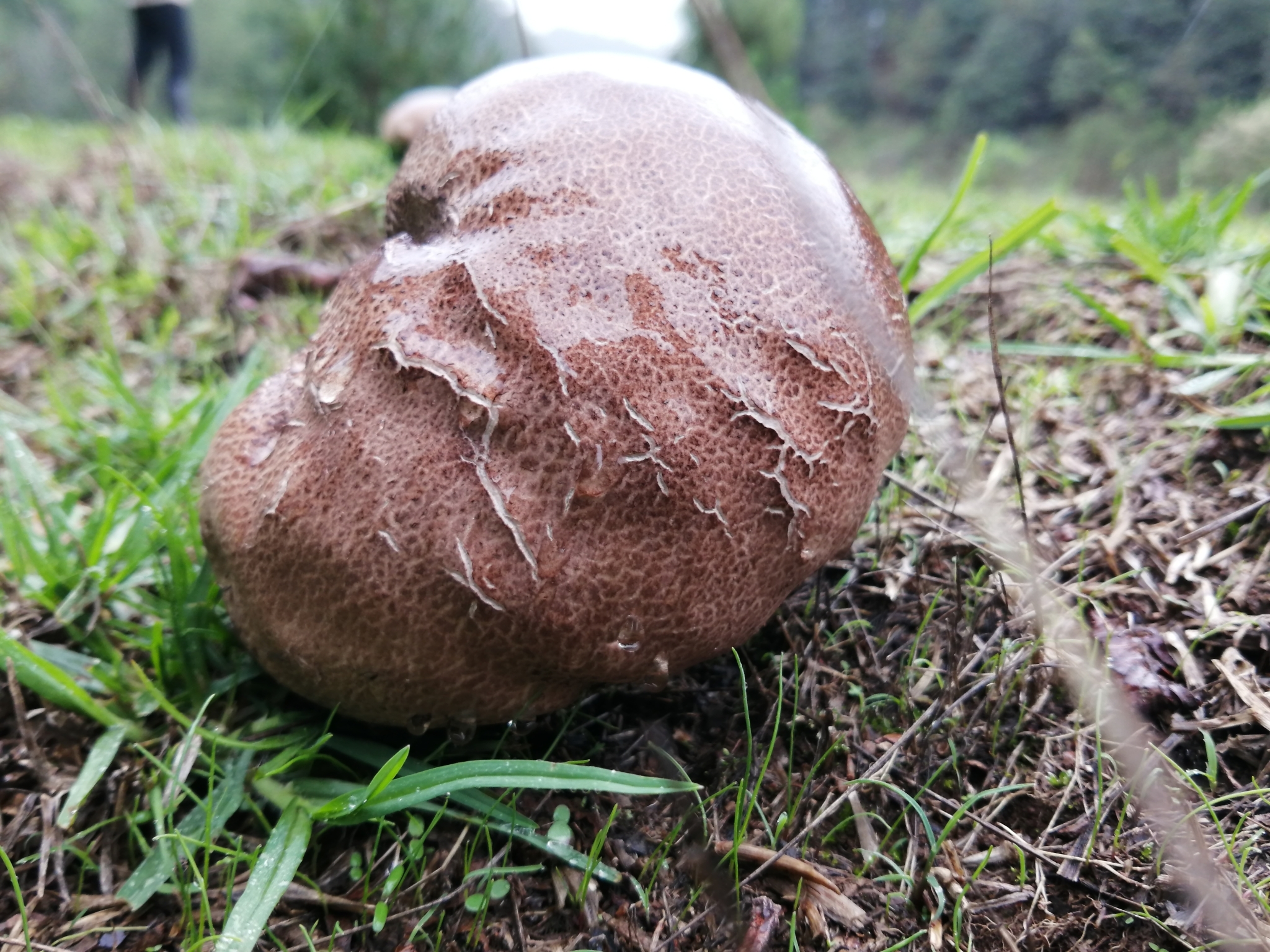
Brain Puffball (Calvatia craniiformis)
These occur mostly in the eastern United States, and have a notable wringly brain-like appearance. They are also about 5-20 cm in height and possess a tan hue. These tend to have a large elongated base.
Sculpted Puffball (Calvatia sculpta)
This species is one of the most charming and aesthetically impressive puffballs due to its large pyramid-shaped peaks, that often come to a thin spikey point.
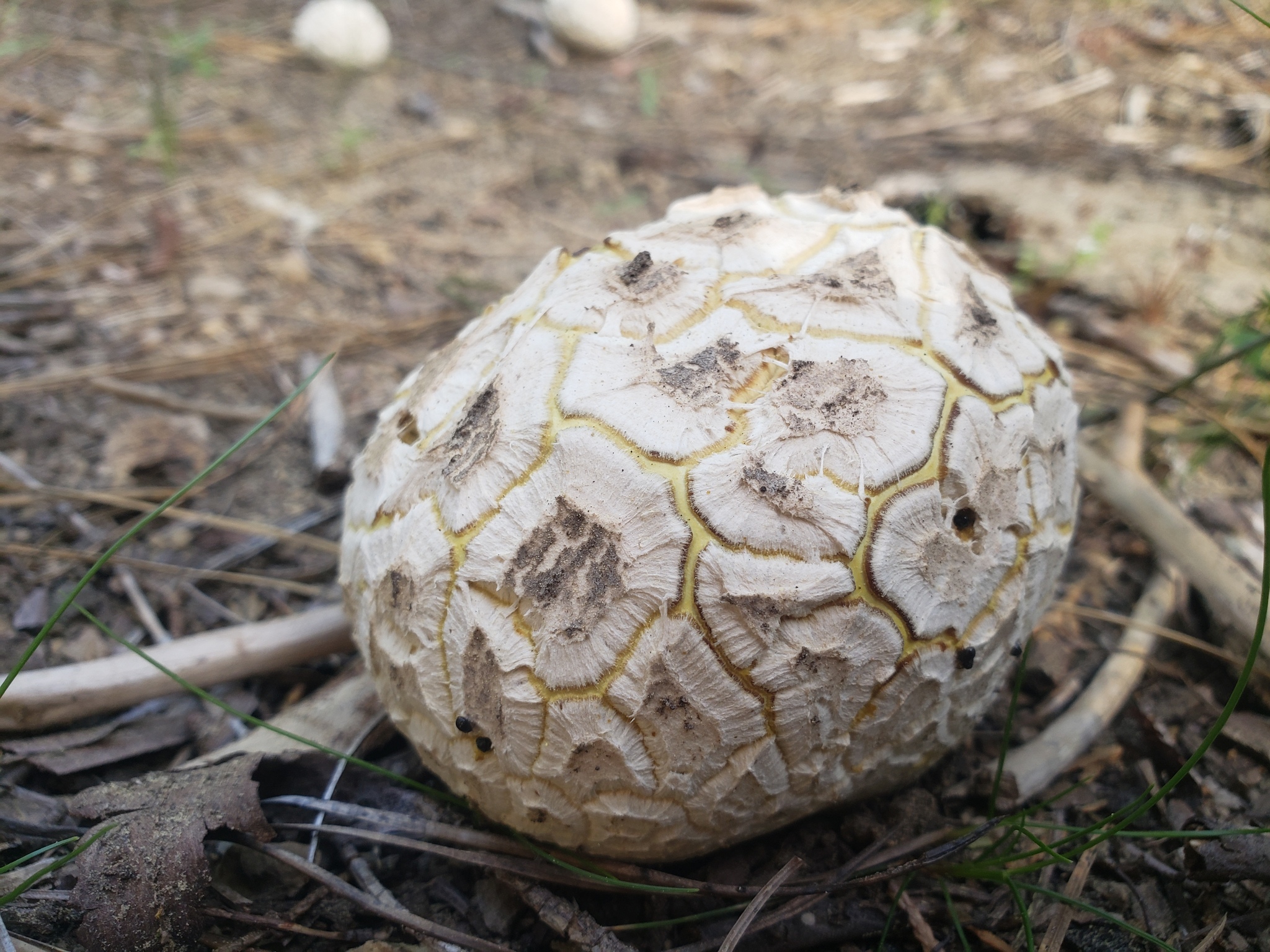
Bovista
This is a diverse genera, although most of the species tend to be rather uncommon. The “Lead Grey Puffball”, or Bovista plumbea, is by far the most common and is typical in grassy lawns or meadows. These mushrooms have a very thin outer surface, that becomes papery and metallic with age. They are known as tumbling puffballs since they are often blown, and tumbled, by the wind.
Bovistas tend to form an opening in their top, but it is typically larger than those found in Lycoperdon and is a often slit-like crack instead of a pore. Other relevant Bovista species include Lead-grey Puffball (Bovista plumbea), Tumbling Puffball (Bovista pila), Dusty Puffball (Bovista nigrescens), Summer Puffball (Bovista aestivalis), Least Puffball (Bovista pusilla). They are generally considered inferior edibles compared to Lycoperdon and Calvatia.
Mushroom Foraging Guides
Foraging more than puffballs this season?
Mushroom Tutorials
Looking for more information about mushrooms, both wild and cultivated?
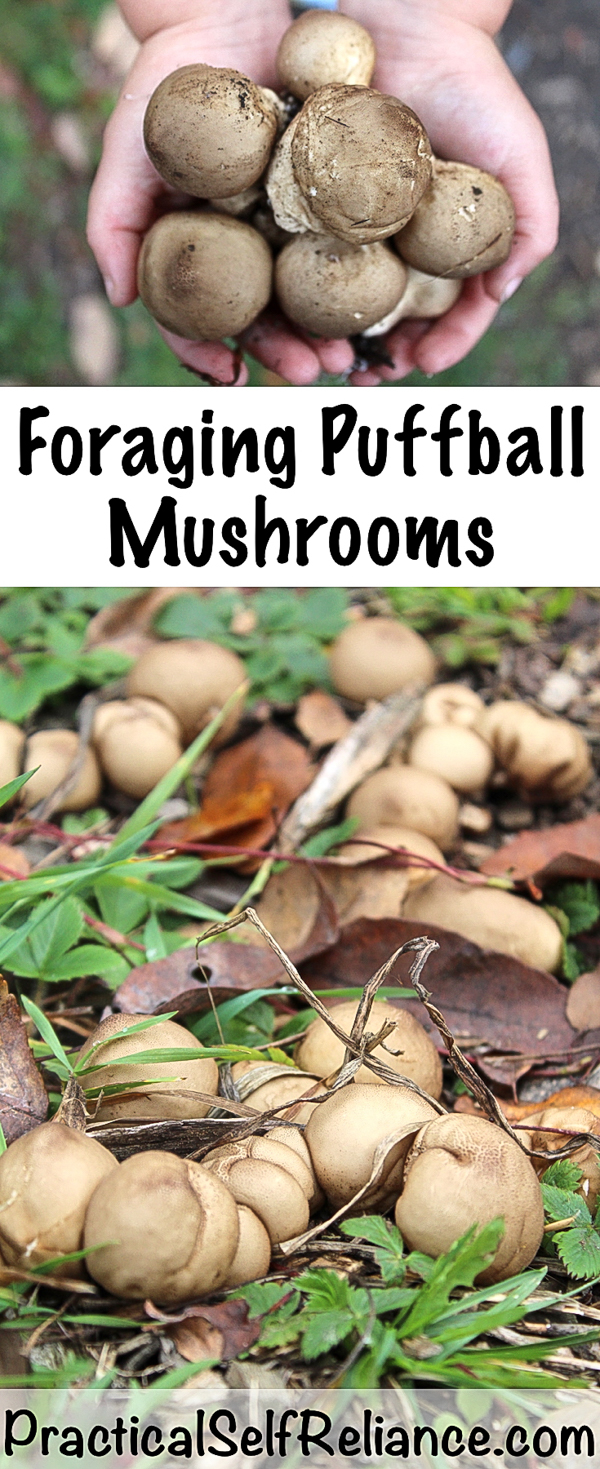

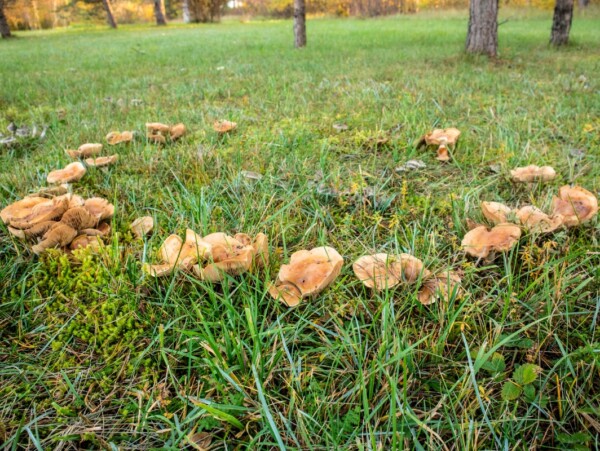
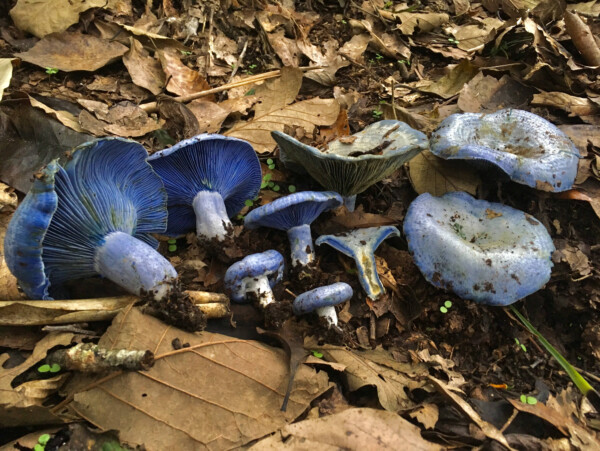
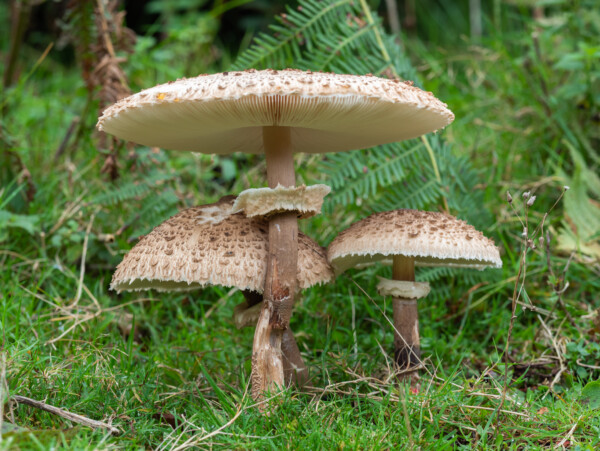










I have a photograph of myself holding a larger than basketball size puffball mushroom. I took it to a neighborhood bar and grill and we sliced off a 12 inch circle and put it in the pizza oven. Would you like a picture of me holding the mushroom?
That would be awesome! Mail it to me at Ashley.Adamant@gmail.com and let me know how to credit it!
My mom taught me to make the puffballs go poof as a young child. I used to get so much joy from them. Lovely to know that they are also edible!
Such great memories.
Word of Caution: Most books counsel against eating shrimp mushrooms, though they are safe, the possibility of look alikes is unclear.
Good to know!
Thank you for this very valuable information.
You’re welcome.
Where I live in Ottawa ON, we always found giant puffballs in early September in the field behind our house. We cut them into slices, dipped them in seasoned flour and fried in butter. Delicious!
Yummy!
Just harvested a puffball that showed up in my back yard over the weekend. I must be a couple days late as the inside was already turning yellow. Any idea if the spores will still mature after cutting them open? I plan to toss them in our compost. Seems like a perfect place for inedible shrooms 🙂
They should, at least our discards seem to. I forgot about some once and they all turned to spores =)
Giant puffballs just showed up in my yard and I had no clue what they were. I thought maybe some sort of weird deadly plant had made my front yard its home, To my delight I found out that they are harmless puffballs which are all white inside . I am not planning on eating them though as I am not a lover of mushrooms. but hey, I had no clue Texas in all of its nasty heat could grow such cool mushrooms.
I happened upon a puffball in a friend’s yard! I picked it, ate it and freaked out! So much for self confidence!
Now I’m even more nervous, but clearer about approach!
Love your approach to life!
Thank you for this! I have puffballs all over my yard! Being new in the area, this bothered me! I didn’t know what I was dealing with!!!! I knew it was a fungus. I know some are poisonous. I have dogs. I have grandkids. AND I COOK…so now I have something new to learn too. But I’ll be doing much more research on that!!! But thanks again!
My Dad taught me about pufffballs and I was beyond excited to find one in my fiancé’s back yard. I explained how special these guys are and had him dice one up to roast on the grill with some baby portabella’s. He loves them!!! We have 2 mid size ones we will be cooking this evening. We love mushrooms and desire to take some foraging classes when we move to TN near the blue Ridge Mts. I am so glad I stumbled onto the Pinterest post and now will be a big part of this website
Wonderful, so happy to have you along for the fun =)
I have a cousin who lives a couple of hours north of Kalispell MT. He sent me a picture last week of him holding a ten pound puffball. Yes he and his wife and children live in Canada. So maybe you could take a trip up there. And see if you can find a large puffball mushroom for your family.
I cannot wait to see what mushrooms can offer in the future of medicine. I hope that this magical plant would not be abused and misused. Everything, if used properly and moderately proves to be beneficial.